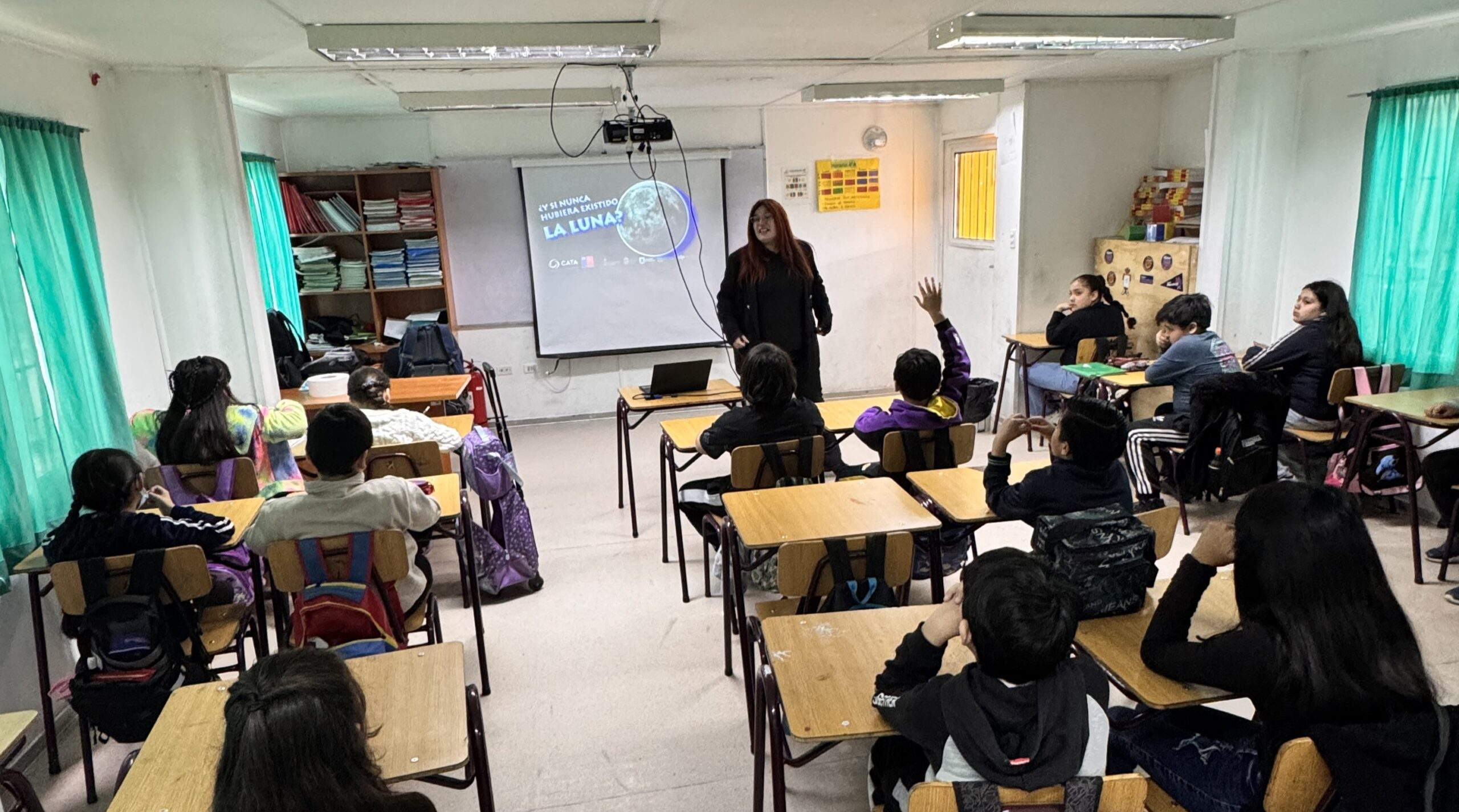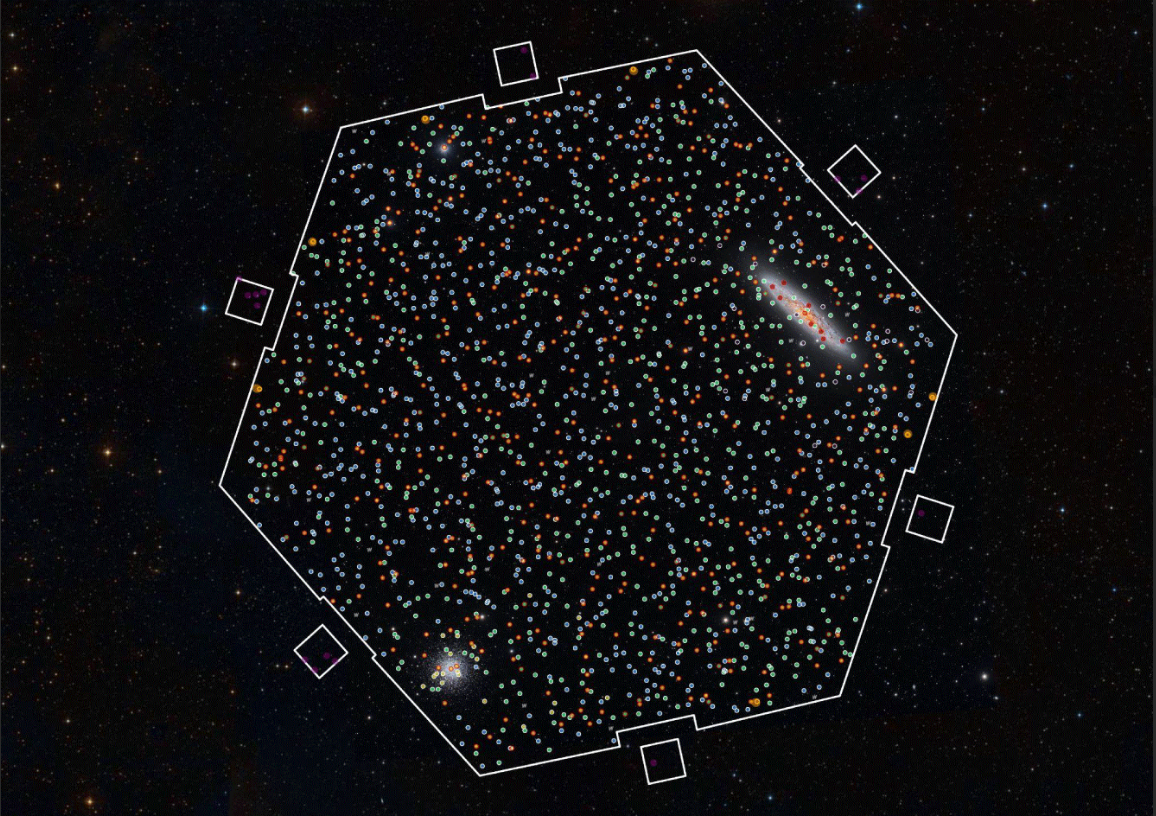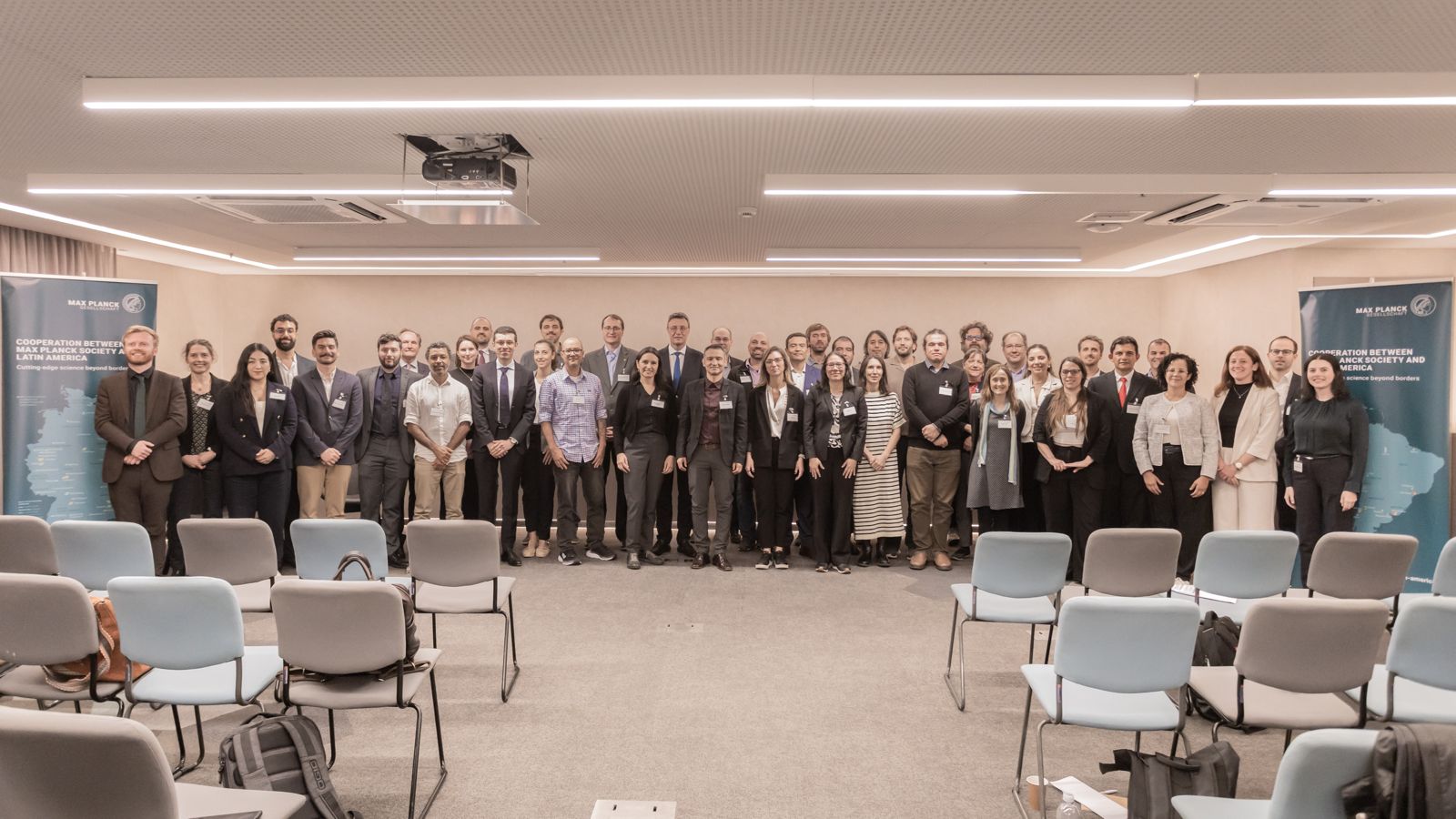
CATA led coverage of the annular solar eclipse
Given the media and public expectation generated by this astronomical event, the Center prepared a media outreach strategy and counted on the presence of CATA's Manager in Rapa Nui, the place where the eclipse was best appreciated.
In recent years we had the opportunity to observe two relevant total solar eclipses, one in the Coquimbo Region and the other in La Araucanía, which aroused the curiosity of a large part of the population that followed these events with great interest. Now, it was the turn of Isla de Pascua and the town of Cochrane to become the privileged points to see the annular solar eclipse that took place last October 2.
CATA, together with the group “Eclipse Aventura”, managed to capture the only professional image of the event from Rapa Nui, which was used as a reference by all open television channels in the country, in their special broadcasts and newscasts, and also by several news platforms on the web. Thus, CATA’s role was highlighted with explicit acknowledgements and the presence of the Center’s logo as a brand during the media broadcasts.
In parallel, the presence of the Center’s astronomers Gaspar Galaz, Bárbara Rojas, César Fuentes, Diego Mardones, Ricardo Demarco and Francisco Förster, together with CATA’s Outreach Content Manager, José Utreras, appeared as analysts, before and during the astronomical event, in media such as Canal 13, TVN, Mega, Canal 9 Biobío TV, La Tercera, El Mercurio, Publimetro, LUN and radio stations ADN, Biobío and Cooperativa.
CATA also had an outstanding presence through its Manager Elise Servajean, who was on Easter Island during the annular eclipse. On that occasion, the local channel Mata O Te Rapa Nui TV made a special program that had her as a panelist and, later, she was requested as an astronomer for the articles prepared by El Mercurio and LUN. The particularity of the “Ring of Fire” that occurred during the eclipse, due to the fact that the Moon was not able to completely cover the Sun, was what generated more expectations and was captured in a magnificent way thanks to the transmission offered by CATA.
All these activities were complemented by lectures given at the Rapa Nui Planetarium by Elise Servajean and Francisco Förster, who spoke about the Moon, the formation of the stars and the main theme of the meeting, how and why solar eclipses occur.
Recent news
-
 Publicado el: 15/11/2025Leonids meteor shower 2025: What are they, when will they be visible from Chile, and what can we learn from them?
Publicado el: 15/11/2025Leonids meteor shower 2025: What are they, when will they be visible from Chile, and what can we learn from them? -
 Publicado el: 13/11/2025CATA researcher strengthens international ties during visit to the Center for Astrobiology in Madrid
Publicado el: 13/11/2025CATA researcher strengthens international ties during visit to the Center for Astrobiology in Madrid -
 Publicado el: 12/11/2025Fourth graders learned what would happen if the Moon did not exist
Publicado el: 12/11/2025Fourth graders learned what would happen if the Moon did not exist -
 Publicado el: 29/10/2025Chile celebrates the first light of 4MOST: two major projects involving CATA astronomers begin to explore the Universe
Publicado el: 29/10/2025Chile celebrates the first light of 4MOST: two major projects involving CATA astronomers begin to explore the Universe -
 Publicado el: 24/10/2025CATA researcher participated in Max Planck regional meeting in Brazil
Publicado el: 24/10/2025CATA researcher participated in Max Planck regional meeting in Brazil
Categories list
- Acknowledgments 21
- Astrobiology 6
- AstroCluster 1
- Black holes 18
- Corporativo 57
- Cosmology 5
- Descubrimientos 22
- Disclosure 71
- Exoplanets 13
- Extension 4
- Galaxies 21
- Galaxies formation 5
- Inter y Transdisciplina 4
- Local Universe 16
- Publications 6
- Sin categorizar 34
- Solar System 21
- Stellar formation 8
- Technology 14
- Technology Transfer 16





